Lower School
Curriculum
Lower School
Curriculum
Curriculum by the Grades
McLean’s Lower School is all about learning how to learn. We come at material with purpose and passion, cultivating curiosity, creativity and innovative thinking — laying a solid foundation for success in and out of the classroom. The result: confident young learners who look forward to school, knowing that they’ll be encouraged, supported, and celebrated every step of the way.
Kindergarten
Art
Art is a significant part of the McLean School experience. Our Lower School program teaches students to develop planning and problem solving skills and the knowledge that is necessary to create, learn and respond to art. We introduce the elements of art and principles of design by studying famous artists and working with a wide range of media including drawing, painting, collage, ceramics and printmaking. Each grade level meets twice weekly and continues to build on previous experiences by extending projects, increasing vocabulary and working more independently.
Art history and world cultures are important sources of inspiration and information. Art happens in the studio and classrooms and is often integrated into math, science, social studies and language arts. Beautiful student art is displayed throughout our building and reflects our dedication to the process of creating art, self expression and development of presentation. We are delighted to be present in community art shows and school events.
Communications
Handwriting
Library
Math
Music
Physical Education
Reading
Lower School teachers follow a structured literacy approach to reading that provides systematic and explicit instruction in phonemic awareness, phonics, and reading comprehension. Students are assessed at the beginning, middle, and end of the year and grouped for reading instruction based on their specific strengths and challenges. During the daily reading period, each classroom teacher and the Reading Specialist leads a small group of students through a 45-minute lesson specifically designed to practice and reinforce what those students have already learned and introduce the next concept that they need to master.
Learning to Read: Phonemic Awareness and Phonics
Phonemic awareness–the ability to notice, think about, and work with the individual sounds in spoken words–lays the foundation for learning to read. Through daily routines, teachers show students how to break apart words into their individual sounds, blend individual sounds together to make whole words, and remove, add, or replace sounds to make new words. Once students are able to identify and manipulate the sounds in spoken words, they are prepared to identify and manipulate sounds in written words as they read and spell.
In their study of phonics, students move through an Orton-Gillingham scope and sequence. The Orton Gillingham approach is a structured, systematic, direct, and multisensory way of teaching students to read and spell. The emphasis is on mastering the connection between written letters and spoken sounds–called “the alphabetic principle”-which forms the basis of reading and writing. Students begin by learning the names and sounds of the consonants and short vowels, followed by digraphs, blends, long vowels, and advanced patterns, and they practice blending those sounds together to read and spell words. Students also learn strategies to systematically break apart unknown words to decode accurately. In addition, students practice reading fluency daily. They begin by building letter/sound fluency, and move on to reading words, phrases and sentences fluently. As they gain speed and confidence, they practice reading short and long texts fluently.
In order to keep students’ attention and make learning fun and engaging, teachers use a variety of board games, card games, and physical activities to introduce and reinforce concepts in phonemic awareness, phonics, and fluency.
Reading to Learn: Comprehension
In addition to targeted decoding instruction, teachers provide explicit and systematic comprehension instruction to all Lower School students. This work begins in kindergarten with significant teacher support and continues throughout the grades as students become more proficient and independent. Texts for comprehension instruction are selected to develop students’ appreciation for literature, grow their knowledge about the world, and promote McLean’s values of diversity, inclusivity, and intellectual curiosity.
Before students begin reading a story, novel, or informational text, the teacher will introduce important background knowledge; students may look at pictures, watch a short video, or discuss what they already know about the topic. The teacher will also introduce key vocabulary that students will encounter in the text. Students will learn their definitions, examples and non-examples, and how to use the word in a sentence. Background knowledge and vocabulary are two of the biggest factors that determine students’ comprehension of text.
As students encounter more difficult text, the sentences they read become more complex and can be a challenge to interpret. During reading, the teacher will support students’ comprehension of the language structures, helping students to understand the phrases, clauses, and sentences in the text. The teacher will identify sentences that are challenging to comprehend because of their structure, and show students how to break down and integrate the units of meaning in the complex sentence. The teacher will also help students to integrate meaning between sentences, especially when the text includes transitional phrases and connective words. In order to promote deep comprehension, the teacher will show students how to use the purpose, features, and structure of the text to make inferences and integrate their background knowledge with new information and ideas in the text.
After reading, the teacher and students will explore big ideas and central understandings from the text. Students will have the opportunity to organize and express their understanding both orally and in writing. Teachers can use art, poetry, drama, and other creative mediums that allow students to demonstrate understanding at different levels from the literal to the abstract and provide opportunities to transfer knowledge that they’ve gained through reading into other areas of school and life.
Social Studies
STEM
Writing
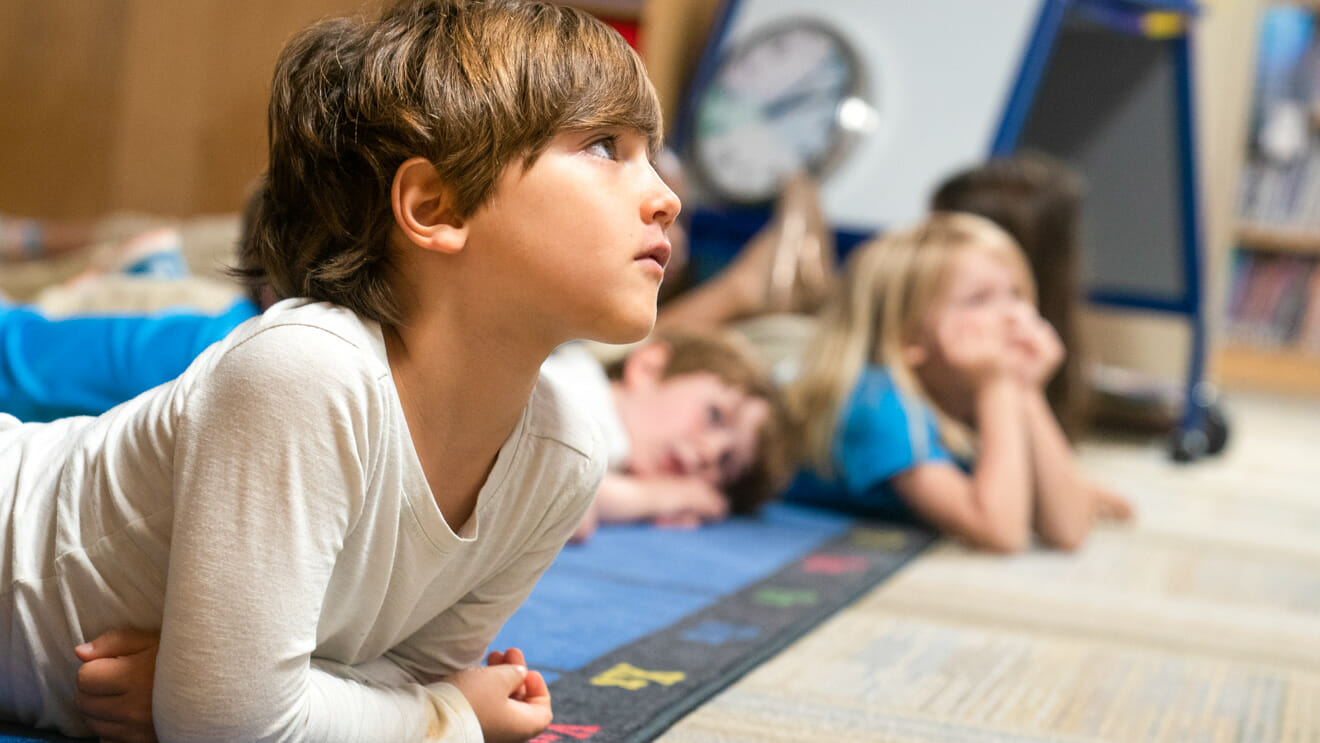
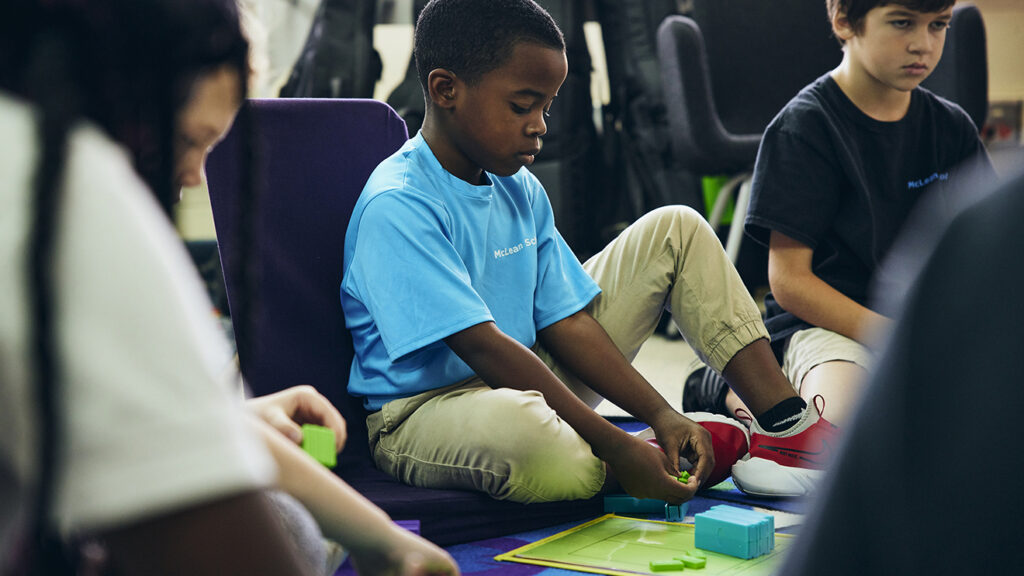
Grade 1
Art
Art is a significant part of the McLean School experience. Our Lower School program teaches students to develop planning and problem solving skills and the knowledge that is necessary to create, learn and respond to art. We introduce the elements of art and principles of design by studying famous artists and working with a wide range of media including drawing, painting, collage, ceramics and printmaking. Each grade level meets twice weekly and continues to build on previous experiences by extending projects, increasing vocabulary and working more independently.
Art history and world cultures are important sources of inspiration and information. Art happens in the studio and classrooms and is often integrated into math, science, social studies and language arts. Beautiful student art is displayed throughout our building and reflects our dedication to the process of creating art, self expression and development of presentation. We are delighted to be present in community art shows and school events.
Communications
Handwriting
Library
Math
Music
Physical Education
Reading
Lower School teachers follow a structured literacy approach to reading that provides systematic and explicit instruction in phonemic awareness, phonics, and reading comprehension. Students are assessed at the beginning, middle, and end of the year and grouped for reading instruction based on their specific strengths and challenges. During the daily reading period, each classroom teacher and the Reading Specialist leads a small group of students through a 45-minute lesson specifically designed to practice and reinforce what those students have already learned and introduce the next concept that they need to master.
Learning to Read: Phonemic Awareness and Phonics
Phonemic awareness–the ability to notice, think about, and work with the individual sounds in spoken words–lays the foundation for learning to read. Through daily routines, teachers show students how to break apart words into their individual sounds, blend individual sounds together to make whole words, and remove, add, or replace sounds to make new words. Once students are able to identify and manipulate the sounds in spoken words, they are prepared to identify and manipulate sounds in written words as they read and spell.
In their study of phonics, students move through an Orton-Gillingham scope and sequence. The Orton Gillingham approach is a structured, systematic, direct, and multisensory way of teaching students to read and spell. The emphasis is on mastering the connection between written letters and spoken sounds–called “the alphabetic principle”-which forms the basis of reading and writing. Students begin by learning the names and sounds of the consonants and short vowels, followed by digraphs, blends, long vowels, and advanced patterns, and they practice blending those sounds together to read and spell words. Students also learn strategies to systematically break apart unknown words to decode accurately. In addition, students practice reading fluency daily. They begin by building letter/sound fluency, and move on to reading words, phrases and sentences fluently. As they gain speed and confidence, they practice reading short and long texts fluently.
In order to keep students’ attention and make learning fun and engaging, teachers use a variety of board games, card games, and physical activities to introduce and reinforce concepts in phonemic awareness, phonics, and fluency.
Reading to Learn: Comprehension
In addition to targeted decoding instruction, teachers provide explicit and systematic comprehension instruction to all Lower School students. This work begins in kindergarten with significant teacher support and continues throughout the grades as students become more proficient and independent. Texts for comprehension instruction are selected to develop students’ appreciation for literature, grow their knowledge about the world, and promote McLean’s values of diversity, inclusivity, and intellectual curiosity.
Before students begin reading a story, novel, or informational text, the teacher will introduce important background knowledge; students may look at pictures, watch a short video, or discuss what they already know about the topic. The teacher will also introduce key vocabulary that students will encounter in the text. Students will learn their definitions, examples and non-examples, and how to use the word in a sentence. Background knowledge and vocabulary are two of the biggest factors that determine students’ comprehension of text.
As students encounter more difficult text, the sentences they read become more complex and can be a challenge to interpret. During reading, the teacher will support students’ comprehension of the language structures, helping students to understand the phrases, clauses, and sentences in the text. The teacher will identify sentences that are challenging to comprehend because of their structure, and show students how to break down and integrate the units of meaning in the complex sentence. The teacher will also help students to integrate meaning between sentences, especially when the text includes transitional phrases and connective words. In order to promote deep comprehension, the teacher will show students how to use the purpose, features, and structure of the text to make inferences and integrate their background knowledge with new information and ideas in the text.
After reading, the teacher and students will explore big ideas and central understandings from the text. Students will have the opportunity to organize and express their understanding both orally and in writing. Teachers can use art, poetry, drama, and other creative mediums that allow students to demonstrate understanding at different levels from the literal to the abstract and provide opportunities to transfer knowledge that they’ve gained through reading into other areas of school and life.
Social Studies
STEM
Writing
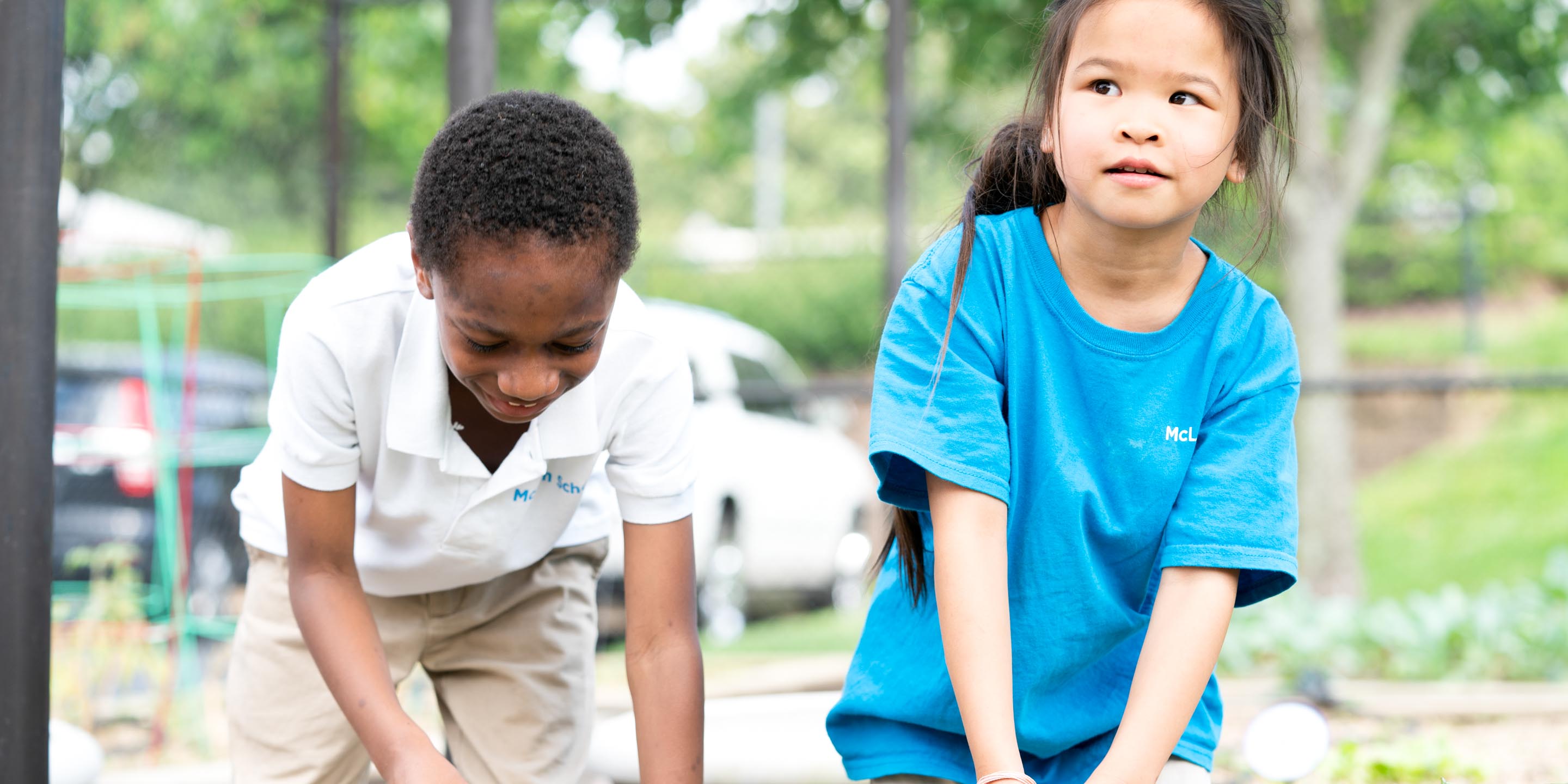
Grade 2
Art
Communications
Handwriting
Library
Math
Music
Physical Education
Reading
Lower School teachers follow a structured literacy approach to reading that provides systematic and explicit instruction in phonemic awareness, phonics, and reading comprehension. Students are assessed at the beginning, middle, and end of the year and grouped for reading instruction based on their specific strengths and challenges. During the daily reading period, each classroom teacher and the Reading Specialist leads a small group of students through a 45-minute lesson specifically designed to practice and reinforce what those students have already learned and introduce the next concept that they need to master.
Learning to Read: Phonemic Awareness and Phonics
Phonemic awareness–the ability to notice, think about, and work with the individual sounds in spoken words–lays the foundation for learning to read. Through daily routines, teachers show students how to break apart words into their individual sounds, blend individual sounds together to make whole words, and remove, add, or replace sounds to make new words. Once students are able to identify and manipulate the sounds in spoken words, they are prepared to identify and manipulate sounds in written words as they read and spell.
In their study of phonics, students move through an Orton-Gillingham scope and sequence. The Orton Gillingham approach is a structured, systematic, direct, and multisensory way of teaching students to read and spell. The emphasis is on mastering the connection between written letters and spoken sounds–called “the alphabetic principle”-which forms the basis of reading and writing. Students begin by learning the names and sounds of the consonants and short vowels, followed by digraphs, blends, long vowels, and advanced patterns, and they practice blending those sounds together to read and spell words. Students also learn strategies to systematically break apart unknown words to decode accurately. In addition, students practice reading fluency daily. They begin by building letter/sound fluency, and move on to reading words, phrases and sentences fluently. As they gain speed and confidence, they practice reading short and long texts fluently.
In order to keep students’ attention and make learning fun and engaging, teachers use a variety of board games, card games, and physical activities to introduce and reinforce concepts in phonemic awareness, phonics, and fluency.
Reading to Learn: Comprehension
In addition to targeted decoding instruction, teachers provide explicit and systematic comprehension instruction to all Lower School students. This work begins in kindergarten with significant teacher support and continues throughout the grades as students become more proficient and independent. Texts for comprehension instruction are selected to develop students’ appreciation for literature, grow their knowledge about the world, and promote McLean’s values of diversity, inclusivity, and intellectual curiosity.
Before students begin reading a story, novel, or informational text, the teacher will introduce important background knowledge; students may look at pictures, watch a short video, or discuss what they already know about the topic. The teacher will also introduce key vocabulary that students will encounter in the text. Students will learn their definitions, examples and non-examples, and how to use the word in a sentence. Background knowledge and vocabulary are two of the biggest factors that determine students’ comprehension of text.
As students encounter more difficult text, the sentences they read become more complex and can be a challenge to interpret. During reading, the teacher will support students’ comprehension of the language structures, helping students to understand the phrases, clauses, and sentences in the text. The teacher will identify sentences that are challenging to comprehend because of their structure, and show students how to break down and integrate the units of meaning in the complex sentence. The teacher will also help students to integrate meaning between sentences, especially when the text includes transitional phrases and connective words. In order to promote deep comprehension, the teacher will show students how to use the purpose, features, and structure of the text to make inferences and integrate their background knowledge with new information and ideas in the text.
After reading, the teacher and students will explore big ideas and central understandings from the text. Students will have the opportunity to organize and express their understanding both orally and in writing. Teachers can use art, poetry, drama, and other creative mediums that allow students to demonstrate understanding at different levels from the literal to the abstract and provide opportunities to transfer knowledge that they’ve gained through reading into other areas of school and life.
Social Studies
STEM
Writing
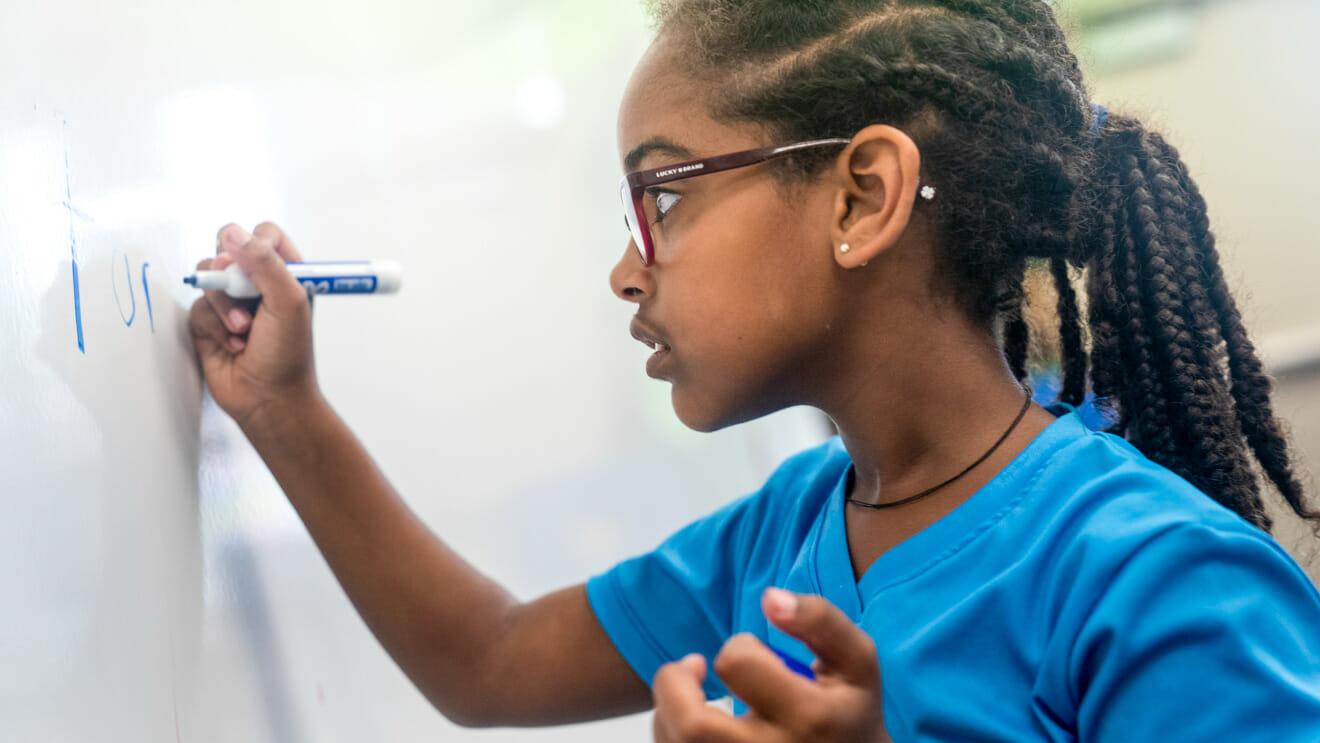
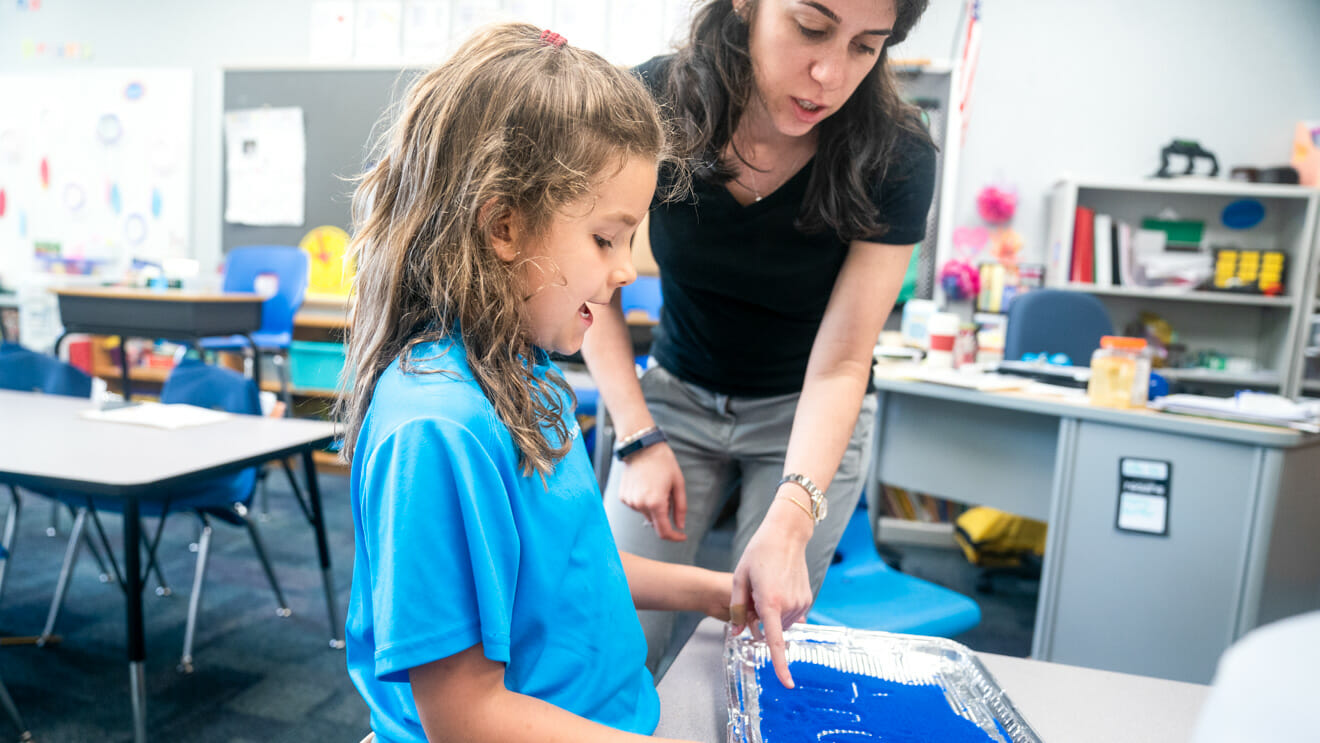
Grade 3
Art
Chorus
Communications
Handwriting and Keyboarding
Math
Music
Physical Education
Reading
Lower School teachers follow a structured literacy approach to reading that provides systematic and explicit instruction in phonemic awareness, phonics, and reading comprehension. Students are assessed at the beginning, middle, and end of the year and grouped for reading instruction based on their specific strengths and challenges. During the daily reading period, each classroom teacher and the Reading Specialist leads a small group of students through a 45-minute lesson specifically designed to practice and reinforce what those students have already learned and introduce the next concept that they need to master.
Learning to Read: Phonemic Awareness and Phonics
Phonemic awareness–the ability to notice, think about, and work with the individual sounds in spoken words–lays the foundation for learning to read. Through daily routines, teachers show students how to break apart words into their individual sounds, blend individual sounds together to make whole words, and remove, add, or replace sounds to make new words. Once students are able to identify and manipulate the sounds in spoken words, they are prepared to identify and manipulate sounds in written words as they read and spell.
In their study of phonics, students move through an Orton-Gillingham scope and sequence. The Orton Gillingham approach is a structured, systematic, direct, and multisensory way of teaching students to read and spell. The emphasis is on mastering the connection between written letters and spoken sounds–called “the alphabetic principle”-which forms the basis of reading and writing. Students begin by learning the names and sounds of the consonants and short vowels, followed by digraphs, blends, long vowels, and advanced patterns, and they practice blending those sounds together to read and spell words. Students also learn strategies to systematically break apart unknown words to decode accurately. In addition, students practice reading fluency daily. They begin by building letter/sound fluency, and move on to reading words, phrases and sentences fluently. As they gain speed and confidence, they practice reading short and long texts fluently.
In order to keep students’ attention and make learning fun and engaging, teachers use a variety of board games, card games, and physical activities to introduce and reinforce concepts in phonemic awareness, phonics, and fluency.
Reading to Learn: Comprehension
In addition to targeted decoding instruction, teachers provide explicit and systematic comprehension instruction to all Lower School students. This work begins in kindergarten with significant teacher support and continues throughout the grades as students become more proficient and independent. Texts for comprehension instruction are selected to develop students’ appreciation for literature, grow their knowledge about the world, and promote McLean’s values of diversity, inclusivity, and intellectual curiosity.
Before students begin reading a story, novel, or informational text, the teacher will introduce important background knowledge; students may look at pictures, watch a short video, or discuss what they already know about the topic. The teacher will also introduce key vocabulary that students will encounter in the text. Students will learn their definitions, examples and non-examples, and how to use the word in a sentence. Background knowledge and vocabulary are two of the biggest factors that determine students’ comprehension of text.
As students encounter more difficult text, the sentences they read become more complex and can be a challenge to interpret. During reading, the teacher will support students’ comprehension of the language structures, helping students to understand the phrases, clauses, and sentences in the text. The teacher will identify sentences that are challenging to comprehend because of their structure, and show students how to break down and integrate the units of meaning in the complex sentence. The teacher will also help students to integrate meaning between sentences, especially when the text includes transitional phrases and connective words. In order to promote deep comprehension, the teacher will show students how to use the purpose, features, and structure of the text to make inferences and integrate their background knowledge with new information and ideas in the text.
After reading, the teacher and students will explore big ideas and central understandings from the text. Students will have the opportunity to organize and express their understanding both orally and in writing. Teachers can use art, poetry, drama, and other creative mediums that allow students to demonstrate understanding at different levels from the literal to the abstract and provide opportunities to transfer knowledge that they’ve gained through reading into other areas of school and life.
Social Studies
STEM
Strings
Writing
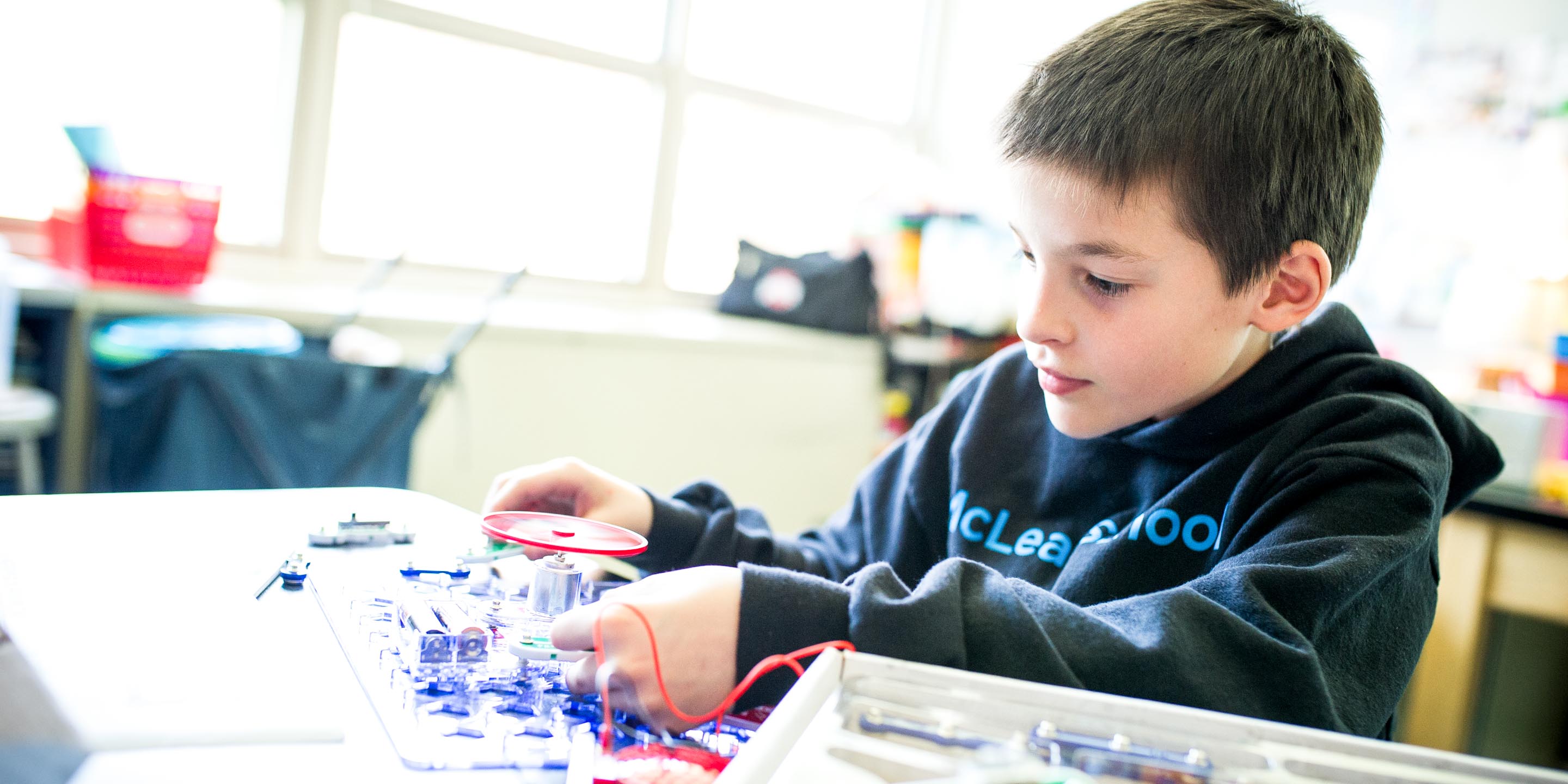
Grade 4
Art
Chorus
Handwriting and Keyboarding
Library
Math
Music
Physical Education
Reading
Lower School teachers follow a structured literacy approach to reading that provides systematic and explicit instruction in phonemic awareness, phonics, and reading comprehension. Students are assessed at the beginning, middle, and end of the year and grouped for reading instruction based on their specific strengths and challenges. During the daily reading period, each classroom teacher and the Reading Specialist leads a small group of students through a 45-minute lesson specifically designed to practice and reinforce what those students have already learned and introduce the next concept that they need to master.
Learning to Read: Phonemic Awareness and Phonics
Phonemic awareness–the ability to notice, think about, and work with the individual sounds in spoken words–lays the foundation for learning to read. Through daily routines, teachers show students how to break apart words into their individual sounds, blend individual sounds together to make whole words, and remove, add, or replace sounds to make new words. Once students are able to identify and manipulate the sounds in spoken words, they are prepared to identify and manipulate sounds in written words as they read and spell.
In their study of phonics, students move through an Orton-Gillingham scope and sequence. The Orton Gillingham approach is a structured, systematic, direct, and multisensory way of teaching students to read and spell. The emphasis is on mastering the connection between written letters and spoken sounds–called “the alphabetic principle”-which forms the basis of reading and writing. Students begin by learning the names and sounds of the consonants and short vowels, followed by digraphs, blends, long vowels, and advanced patterns, and they practice blending those sounds together to read and spell words. Students also learn strategies to systematically break apart unknown words to decode accurately. In addition, students practice reading fluency daily. They begin by building letter/sound fluency, and move on to reading words, phrases and sentences fluently. As they gain speed and confidence, they practice reading short and long texts fluently.
In order to keep students’ attention and make learning fun and engaging, teachers use a variety of board games, card games, and physical activities to introduce and reinforce concepts in phonemic awareness, phonics, and fluency.
Reading to Learn: Comprehension
In addition to targeted decoding instruction, teachers provide explicit and systematic comprehension instruction to all Lower School students. This work begins in kindergarten with significant teacher support and continues throughout the grades as students become more proficient and independent. Texts for comprehension instruction are selected to develop students’ appreciation for literature, grow their knowledge about the world, and promote McLean’s values of diversity, inclusivity, and intellectual curiosity.
Before students begin reading a story, novel, or informational text, the teacher will introduce important background knowledge; students may look at pictures, watch a short video, or discuss what they already know about the topic. The teacher will also introduce key vocabulary that students will encounter in the text. Students will learn their definitions, examples and non-examples, and how to use the word in a sentence. Background knowledge and vocabulary are two of the biggest factors that determine students’ comprehension of text.
As students encounter more difficult text, the sentences they read become more complex and can be a challenge to interpret. During reading, the teacher will support students’ comprehension of the language structures, helping students to understand the phrases, clauses, and sentences in the text. The teacher will identify sentences that are challenging to comprehend because of their structure, and show students how to break down and integrate the units of meaning in the complex sentence. The teacher will also help students to integrate meaning between sentences, especially when the text includes transitional phrases and connective words. In order to promote deep comprehension, the teacher will show students how to use the purpose, features, and structure of the text to make inferences and integrate their background knowledge with new information and ideas in the text.
After reading, the teacher and students will explore big ideas and central understandings from the text. Students will have the opportunity to organize and express their understanding both orally and in writing. Teachers can use art, poetry, drama, and other creative mediums that allow students to demonstrate understanding at different levels from the literal to the abstract and provide opportunities to transfer knowledge that they’ve gained through reading into other areas of school and life.